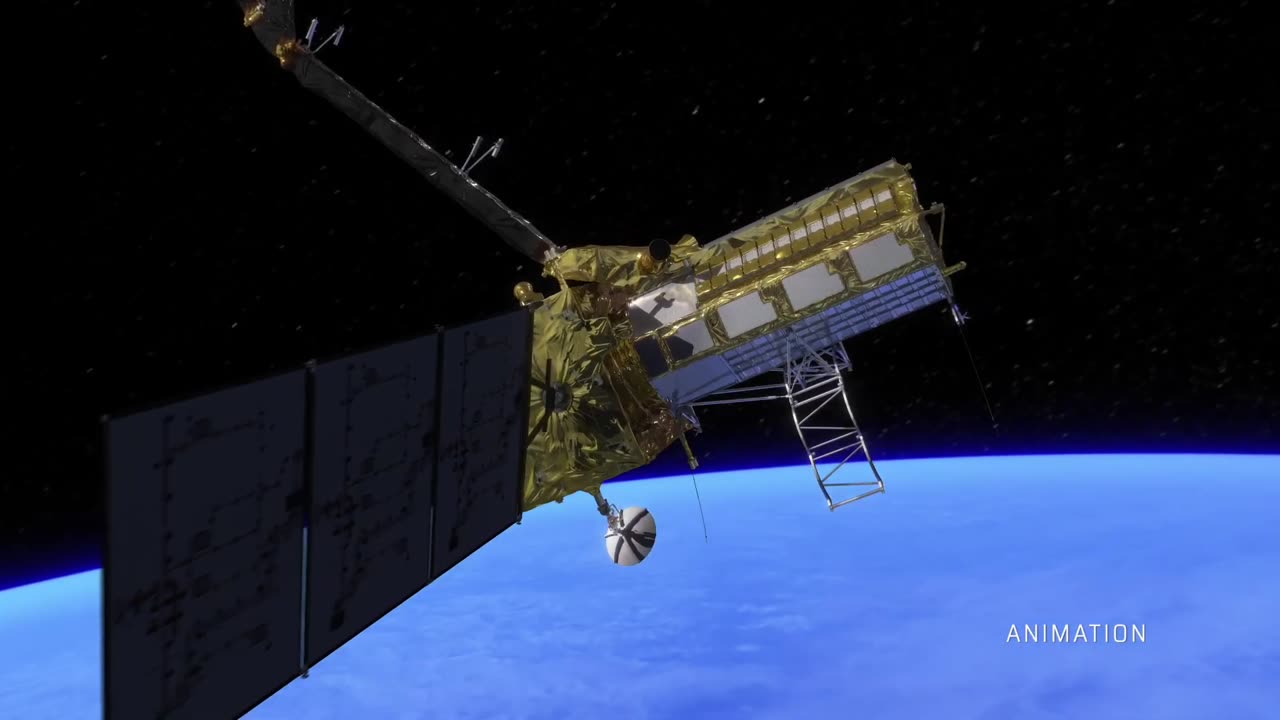Premium Only Content

How Fieldwork in the Amazon Is Supporting NASA Climate Science – NISAR Mission Travelogue
#nasa #amazon #fieldwork #climate #climatescience #science #NISAR #travelogue #nasamission #nasaclimatescience #earthexploration #solar #solarsystem #moon #nisarmission #satellite #satellitemission #spacemission #earth #wolfchamp
How Fieldwork in the Amazon Is Supporting NASA Climate Science – NISAR Mission Travelogue
A joint U.S.-India satellite mission called NISAR – the NASA-ISRO Synthetic Aperture Radar (NISAR) mission – will soon set out with new tools to better understand climate change. As a way to validate the satellite’s global, space-based observations, NASA scientists went to the Peruvian Amazon to install a network of sensors that will help calibrate measurements from the NISAR spacecraft.
Why the Amazon? In tropical wetlands, changes in seasonal flooding cycles can lead to increased production of greenhouse gases like methane and carbon dioxide.
A collaboration between NASA and ISRO (Indian Space Research Organisation), NISAR will use a sophisticated radar system to track wetland inundation and other changes to Earth’s surface. The satellite is expected to launch in early 2024 from ISRO’s Satish Dhawan Space Centre in Sriharikota, India.
For more information on the NISAR mission, visit: https://nisar.jpl.nasa.gov/.
Credit: Video production and NISAR animations: NASA/JPL-Caltech; Methane animations: NASA’s Scientific Visualization Studio; Amazon field work footage courtesy of A. Pruna
How Fieldwork in the Amazon Is Supporting NASA Climate Science – NISAR Mission Travelogue
A joint U.S.-India satellite mission called NISAR – the NASA-ISRO Synthetic Aperture Radar (NISAR) mission – will soon set out with new tools to better understand climate change. As a way to validate the satellite’s global, space-based observations, NASA scientists went to the Peruvian Amazon to install a network of sensors that will help calibrate measurements from the NISAR spacecraft.
Why the Amazon? In tropical wetlands, changes in seasonal flooding cycles can lead to increased production of greenhouse gases like methane and carbon dioxide.
A collaboration between NASA and ISRO (Indian Space Research Organisation), NISAR will use a sophisticated radar system to track wetland inundation and other changes to Earth’s surface. The satellite is expected to launch in early 2024 from ISRO’s Satish Dhawan Space Centre in Sriharikota, India.
For more information on the NISAR mission, visit: https://nisar.jpl.nasa.gov/.
Credit: Video production and NISAR animations: NASA/JPL-Caltech; Methane animations: NASA’s Scientific Visualization Studio; Amazon field work footage courtesy of A. Pruna
How Fieldwork in the Amazon Is Supporting NASA Climate Science – NISAR Mission Travelogue
A joint U.S.-India satellite mission called NISAR – the NASA-ISRO Synthetic Aperture Radar (NISAR) mission – will soon set out with new tools to better understand climate change. As a way to validate the satellite’s global, space-based observations, NASA scientists went to the Peruvian Amazon to install a network of sensors that will help calibrate measurements from the NISAR spacecraft.
Why the Amazon? In tropical wetlands, changes in seasonal flooding cycles can lead to increased production of greenhouse gases like methane and carbon dioxide.
A collaboration between NASA and ISRO (Indian Space Research Organisation), NISAR will use a sophisticated radar system to track wetland inundation and other changes to Earth’s surface. The satellite is expected to launch in early 2024 from ISRO’s Satish Dhawan Space Centre in Sriharikota, India.
For more information on the NISAR mission, visit: https://nisar.jpl.nasa.gov/.
Credit: Video production and NISAR animations: NASA/JPL-Caltech; Methane animations: NASA’s Scientific Visualization Studio; Amazon field work footage courtesy of A. Pruna
How Fieldwork in the Amazon Is Supporting NASA Climate Science – NISAR Mission Travelogue
A joint U.S.-India satellite mission called NISAR – the NASA-ISRO Synthetic Aperture Radar (NISAR) mission – will soon set out with new tools to better understand climate change. As a way to validate the satellite’s global, space-based observations, NASA scientists went to the Peruvian Amazon to install a network of sensors that will help calibrate measurements from the NISAR spacecraft.
Why the Amazon? In tropical wetlands, changes in seasonal flooding cycles can lead to increased production of greenhouse gases like methane and carbon dioxide.
A collaboration between NASA and ISRO (Indian Space Research Organisation), NISAR will use a sophisticated radar system to track wetland inundation and other changes to Earth’s surface. The satellite is expected to launch in early 2024 from ISRO’s Satish Dhawan Space Centre in Sriharikota, India.
For more information on the NISAR mission, visit: https://nisar.jpl.nasa.gov/.
Credit: Video production and NISAR animations: NASA/JPL-Caltech; Methane animations: NASA’s Scientific Visualization Studio; Amazon field work footage courtesy of A. Pruna
How Fieldwork in the Amazon Is Supporting NASA Climate Science – NISAR Mission Travelogue
A joint U.S.-India satellite mission called NISAR – the NASA-ISRO Synthetic Aperture Radar (NISAR) mission – will soon set out with new tools to better understand climate change. As a way to validate the satellite’s global, space-based observations, NASA scientists went to the Peruvian Amazon to install a network of sensors that will help calibrate measurements from the NISAR spacecraft.
Why the Amazon? In tropical wetlands, changes in seasonal flooding cycles can lead to increased production of greenhouse gases like methane and carbon dioxide.
A collaboration between NASA and ISRO (Indian Space Research Organisation), NISAR will use a sophisticated radar system to track wetland inundation and other changes to Earth’s surface. The satellite is expected to launch in early 2024 from ISRO’s Satish Dhawan Space Centre in Sriharikota, India.
For more information on the NISAR mission, visit: https://nisar.jpl.nasa.gov/.
Credit: Video production and NISAR animations: NASA/JPL-Caltech; Methane animations: NASA’s Scientific Visualization Studio; Amazon field work footage courtesy of A. Pruna
-
 9:37
9:37
EvenOut
20 hours ago $1.83 earnedThe Non-Reflecting Mirror Scare Twin Prank!
13.3K1 -
 11:19
11:19
Tundra Tactical
19 hours ago $2.25 earnedI Saw How CMMG Makes Guns.
15.9K6 -
 15:34
15:34
Misha Petrov
14 hours agoReacting To TikTok’s Most DELUSIONAL Takes!
18.1K18 -
 1:52:24
1:52:24
Squaring The Circle, A Randall Carlson Podcast
1 day ago#032 Flournoy Holmes' Artwork Helped Define The Southern Rock Phenomenon of The Early 1970's
15.6K3 -
 19:56
19:56
inspirePlay
1 day ago $0.21 earnedWalking with Lions & Facing Africa’s Wild Side | Safari Adventure with the Grid Championship Crew!
8.97K1 -
 10:50
10:50
RTT: Guns & Gear
1 day ago $0.72 earnedBudget Friendly Carry 2011: EAA Girsan Brat 2311
10.6K3 -
 3:49:06
3:49:06
Alex Zedra
16 hours agoLIVE! New Game | Nuclear Nightmare
102K14 -
 25:08
25:08
MYLUNCHBREAK CHANNEL PAGE
1 day agoUnder The Necropolis - Pt 2
284K78 -
 1:45:59
1:45:59
Spittin' Chiclets
1 day agoCanadian Chokejob - Game Notes Live From Chicago - 12.28.2024
262K32 -
 9:18
9:18
Space Ice
1 day agoThe Guyver - Alien Bug Suits, Exploding Dragons, & Mark Hamill - Weirdest Movie Ever
167K27